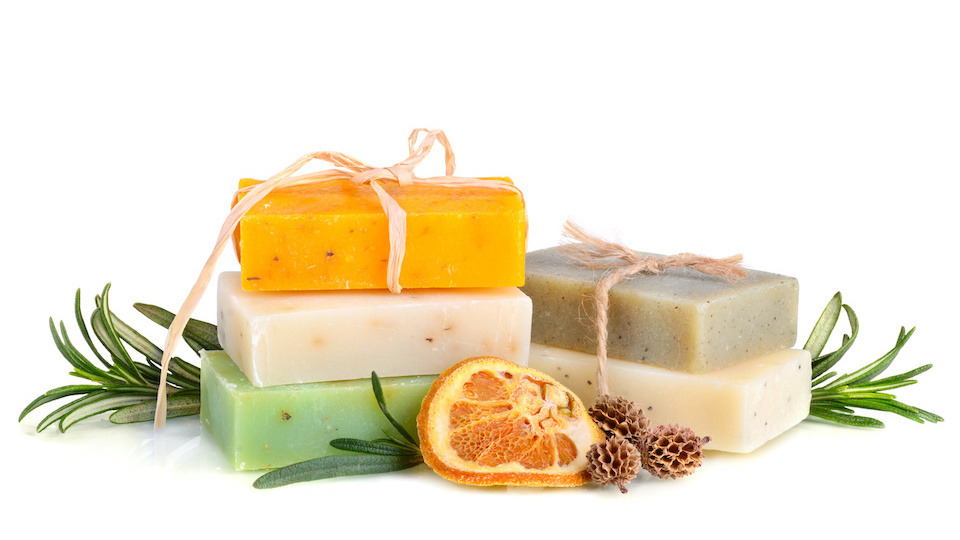Soap making can be incredibly complicated and time-consuming. This recipe, however, simplifies the entire process by using premade glycerin cubes and allows you to focus on creating the scent you desire without having to worry about the technical aspects of creating soap from scratch. Anyone can make this easy herbal soap, so give it a try today!
Best herbs for soap
Mint
Not only is mint one of the easiest herbs to grow, but it is also one of the most fragrant. Plus, mint’s antibacterial properties make it a natural choice for soap. Try using different varieties such as peppermint, spearmint, and chocolate mint to give your bars a unique scent.
Rosemary
Though using rosemary in soap requires an extra step, the benefits and scent boost are totally worth it. This herb is loaded with antibacterial, anti-fungal, and antiviral compounds, and it is a potent antioxidant that can help clear cancer-causing free radicals from your body. Be sure to grind rosemary leaves into a powder in the food processor before using in soap as they are slightly prickly and could irritate your skin.
Lavender
Lavender is one of the most popular herbs for a good reason. Its lovely purple flowers and fragrant leaves help create beautiful, aromatic soap that is great for your skin. Lavender can also help you relax and reduce insomnia, which makes it an excellent choice for night time showers or baths.
Chamomile
Another herb that is famous for its skin-soothing properties, chamomile makes a delightful addition to any soap. These flowers are beautiful and have a light, subtle scent that acts as a natural perfume throughout the day.
To avoid mold accumulating in your soap or unwanted moisture creating air bubbles, be sure to dry your herbs in the sun, the oven, or a dehydrator before adding to soap. This also makes them easier to grind and will help your soap last longer. Store them in a mason jar with a lid to keep them fresh and use a coffee grinder to create the powder-like consistency that works best for soap.
Easy DIY Herbal Soap
What you’ll need
- Glycerin soap, cubed – 4 oz of melted glycerin will make around 3 standard size muffin tin soaps so plan accordingly
- Dried herbs of your choice – 3 Tbsp for every 4 oz of glycerin
- Citrus zest, if desired – 3 Tbsp for every 4 oz of glycerin
- Essential oils, as needed
- Muffin tin
- Coconut oil
What to do:
- Melt the desired amount of glycerin in a double boiler. If you don’t have a double boiler, you can make one by putting a few inches of water in the bottom of a pot and bringing it to a boil. Reduce heat to a simmer, and situate a bowl on top of the pot that allows at least 2 inches of space between the bottom of the bowl and the water.
- You can also melt glycerin in the microwave in 30-second increments, stirring after every 30 seconds. It shouldn’t take more than a minute to melt the cubes. Use a pourable glass container.
- Add in fresh herbs, zest (if using), and two drops of each desired essential oil.
- Stir well to combine and let the mixture rest for about 1 minute to help add the color and scent into the soap.
- A silicone muffin tin is the easiest for soap making, but if you only have a regular muffin tin on hand, be sure to coat the inside of each cup with a small amount of coconut oil.
- Pour ¼ cup into each tin and let sit at room temperature for a few hours.
- Finish hardening off by placing the freezer for 30 minutes.
- Give your soap as a gift or use it yourself! The ingredients are incredibly easy to personalize, and the process is fun and simple, so you can really let your creative side out as you experiment with different herb and essential oil combinations.
Oatmeal is another wonderful ingredient to include in soap. It is a gentle, natural exfoliant that can help soothe and moisturize irritated skin. Add a few Tbsp when you mix the herbs into your soap and enjoy the subtle fragrance and healing properties of rolled or old fashioned oats.
Happy soap making!
-Taylor Ramsey




